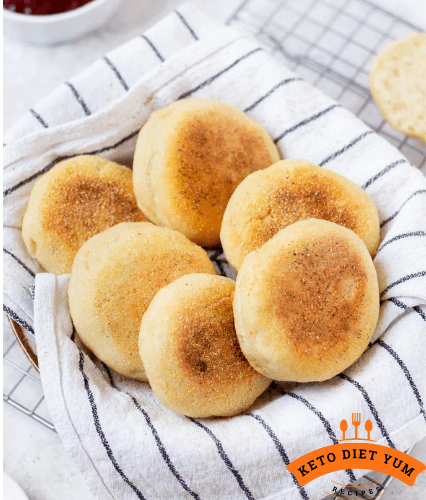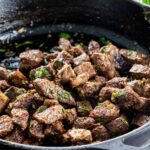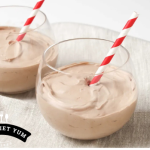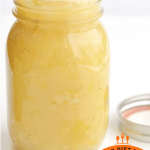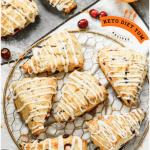The Best Fluffy Pancakes recipe you will fall in love with. Full of tips and tricks to help you make the best pancakes.
Gluten Free English Muffins: These gluten-free English muffins are very light and fluffy, toast up with crispy edges, and are loaded with those perfect little nooks and crannies.
Once they have cooled a bit and you split them with a fork, they freeze like a dream. You can even cook them all the way through in a pan, no need to fire up the oven and heat up your whole kitchen!
Trust me, once you try these homemade gluten-free English muffins, store-bought just won’t cut it. With this easy recipe, you will make these mouth-watering bites easily right at home.

Gluten Free English Muffins Recipe
A warm, toasted gluten free English muffin topped with butter and jam is one of those simple pleasures that brings so much happiness.
It’s like toast, but better. English muffins provide this wonderful balance of being dense yet light and crispy edgy little air pockets that soak up every bit of butter. Those nooks and crannies are what make them so special!
If you’ve been searching, you’ve probably seen a few different gluten-free English muffin recipes out there. The big difference is that some use a runny batter cooked in molds, while others, like this one, use a thicker dough you shape by hand.
These are much more like gluten-free crumpets, but the soft dough means you can easily have thick, round muffins without requiring any fancy tools. Once you get the hang of it, it’s really quite simple.
This gluten-free English muffin recipe is also egg-free and is easily adapted to a dairy-free recipe!
Why You’re Going to Love These Gluten Free English Muffins
No oven required – What makes gluten-free English muffins so beautiful is that they can be baked right on your stovetop, no oven needed.
Soft and delish – Adding milk to the dough makes these muffins soft and smooth on the palate; tossing in melted butter makes them rich and fabulous.
Super easy to make – This recipe uses a soft dough that’s really easy to handle and shape. All you need is a rolling pin and a biscuit cutter, so it’s simple and hassle-free!
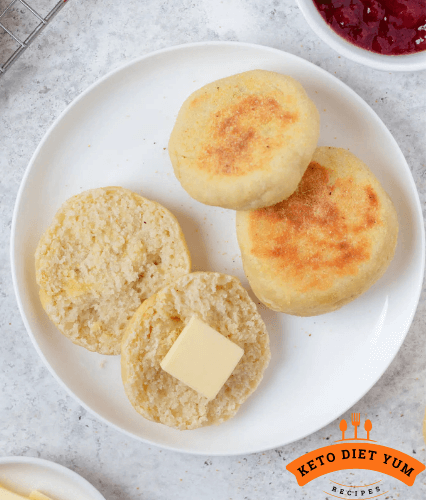
Equipment Needed for This Gluten Free English Muffins
Large bowl – Use a large bowl to mix and combine the dry ingredients with the wet ingredients.
Whisk or spoon – Use a whisk or spoon to thoroughly blend the flour, sugar, salt, and yeast together in the bowl.
Hand mixer or stand mixer – A hand mixer fitted with dough hook beaters or a stand mixer can be used to mix the dough until it comes together.
Round cookie cutter, biscuit cutter, or glass – Use a round cutter or glass to cut out the English muffin circles from the rolled-out dough.
Sheet pan – Prepare a sheet pan by lining it with wax paper for placing the dough rounds.
Skillet or griddle – Heat a large skillet or griddle on the stovetop to cook the English muffins
Spatula – A spatula is useful for flipping English muffins during cooking
Cooling rack – Place the cooked English muffins on a cooling rack to cool before splitting and serving.

HOW TO MAKE GLUTEN FREE ENGLISH MUFFINS
1.In a large bowl combine flour, sugar, salt and yeast.
2.Pour in milk and melted butter. Mix using a hand mixer with dough hooks or a stand mixer for approximately 5 minutes. A little wet that is just perfect!
3.Put dough into greased bowl, cover it with towel, and let it rest at some warm place for 2 hours.
4.Roll the dough doubled in thickness on floured surface to about half an inch thickness.
5.Use round cookie cutter, biscuit cutter or even glass to cut circles from the dough. Gather up any dough that was leftover together and cut some more circles.
6.Line a baking sheet with wax paper, dust it with some cornmeal, and put the dough circles thereon. Dust with more cornmeal and cover the tray. Let muffins rise another 30 minutes.
7.Heat a large skillet (cast iron pans work especially well) to medium heat. Grease the pan lightly with butter or oil and sprinkle cornmeal on the surface.
8.Cook the muffins for 5-7 minutes per side, until they are nicely browned; you’ll have to cook them in batches, so clean the pan between each round.
9.Let the muffins cool thoroughly before splitting with a fork and enjoying!
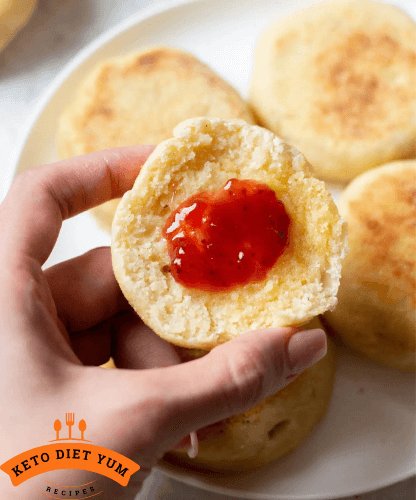
Tips for Making the Best Gluten Free English Muffins
- Add xanthan gum to the dough – If your flour mixture does not contain xanthan gum in it, be sure to include that. That’s what really gives gluten-free doughs structure and adds flexibility to it.
- Allow the dough to rise just so – Letting the dough rise adequately allows the yeast to be effective in the dough, thereby flavoring it as well as making the English muffins lighter and tastier.
- Use a well-greased skillet or griddle – First coat the cooking surface with butter or oil before you start frying your English muffins. This will prevent them from sticking together and will ensure crispy outsides.
- Fry on medium and don’t flip too soon – Let the heat stay on medium so that it will get that even brown color. Wait until the first side is truly golden brown and cooked through before turning them over.
- Use a fork to gently split the muffins when cool – The ways of making those classic nooks and crannies are achieved once you manage to lightly poke with a fork the cooled English muffins. This therefore brings texture and will soak up spreads and fillings more effectively.
- Toast or warm them before use – Toasting your English muffin will do the real thing with its flavor and crunch when ready to eat. It makes the English muffins crispy and helps in improving the overall flavor.
Frequently Asked Questions Gluten Free English Muffins
Why Are They Called English Muffins?
English muffins got their name because they hail from England; this food was well known for many years as a breakfast food in England. English is one of the few languages in which “muffin” refers to a flat, round bread split and often toasted.
The name “English muffin” indeed distinguishes this variety of muffin from the sweet American versions. The word “English” in this name suggests that it comes from the old, traditional recipe and method of preparation.
What Are The Differences Between Gluten-Free English Muffins Vs. Crumpets?
English muffins and crumpets are alike but distinct in some aspects. The English muffin is made from thicker dough, more dough-like bread, that one would shape by hand and then cook on the stovetop, yielding a nice crunch on the outside and fluff on the inside. In contrast, crumpets use a runny batter-poured into molds and cooked on a griddle-with the spongy texture and characteristic holes at the top.
CAN YOU BUY GLUTEN FREE ENGLISH MUFFINS AT THE STORE?
You have a few options if you’re looking to buy gluten-free English muffins at the grocery store or online. Some options include:
Making your own homemade English muffins with gluten-free flour, yeast, and a few other common ingredients is not only a less expensive option, but it’s also the most delicious one. No store-bought muffin will ever taste as good as the ones you’re about to make.
How Do You Get The Nooks And Crannies? WHAT DOES FORK SPLIT MEAN?
To build those “nooks and crannies,” split the English muffins with a fork, not a knife. Store-bought English muffins are usually already split that way. Just grab any ordinary fork and poke deep holes on the sides of each muffin. Then just pull them apart along those holes.
CAN I MAKE ENGLISH MUFFINS ON A GRIDDLE?
Yes, you can use any big skillet or griddle you prefer to cook the muffins. If you have a griddle, you can cook the whole batch at once. I like using a seasoned cast iron skillet because it holds heat well and gives the muffins a nice, brown crust.
Do I Need English Muffin Rings To Make Gluten Free English Muffins?
No, you don’t need muffin rings to make gluten-free English muffins. Some recipes might suggest using rings to shape the muffins, but it’s not required. You can just roll out the dough and cut it into circles with a round cookie cutter, biscuit cutter, or even a glass. Not using rings won’t change the taste or texture, and you can still make yummy gluten-free English muffins without them.
How Do I Store Gluten Free English Muffins?
You can store them in two ways, depending on when you plan to eat them:
Room Temperature Storage – Store the English muffins at room temperature in an airtight container or zip-top bag if you plan to consume them within a day or two. Be sure to let them cool completely when storing them in the refrigerator to avoid moisture buildup. Keep in mind that gluten-free baked goods tend to stale faster than their traditional counterparts, so be sure to consume as soon as possible.
Refrigeration– If you must store the gluten-free English muffins to remain fresh for a longer period, just refrigerate them. Pack the muffins in an air-tight container or zip-top bag; they should last about 4-5 days. You could toast or warm them before eating if you need to regain their texture and flavor.
Can I Freeze Gluten Free English Muffins?
Yeah, gluten-free English muffins freeze great! Just freeze them while they’re fresh, and they’ll taste awesome later.
Fork-split the muffins, then wrap each one in plastic wrap. Toss the wrapped muffins in a freezer bag or container and stick them in the freezer for up to 3 months.
When you’re ready to eat one, take it out of the wrap and microwave it for about 15 seconds until it’s not frozen anymore. Then toast it up and enjoy!
Can You Make These Gluten Free English Muffins Ahead of Time?
Yes, you can; you have two options:
- Freezing – After English muffins have cooled completely, you can wrap each muffin individually in plastic wrap or put each one in an airtight freezer bag. They can be stored for up to 3 months. Just thaw it at room temperature or microwave it slightly until no longer frozen. Toast until crisp and enjoy!
- Refrigeration – English muffins may be refrigerated for a few days. Keep them in an airtight container or a zip-top bag in the refrigerator and they will keep for about 4-5 days. Then toast, warm, or bake before use.
What Can I Eat These English Muffins With?
- English muffins are incredibly versatile and can be enjoyed in various ways. Here are some delicious suggestions for what to eat with English muffins:
- classic breakfast sandwich: Simply slice an English muffin, toast it, and fill it with scrambled eggs, crispy bacon or ham, and melted cheese for a hearty breakfast.
- Butter and jam: Smear some butter and your favorite jam on a toasted English muffin for a quick and tasty treat.
- Eggy Benjamin – Top toasted English muffin with a poached egg, Canadian bacon or smoked salmon, and Hollandaise sauce for a very special brunch.
- Avocado and eggs – mash ripe avocado on a toasted English muffin, add a fried or poached egg; a sprinkle of salt and pepper and maybe some hot sauce on the side, for a delicious, healthy breakfast or snack.
- These are just a few ideas to get you started but feel free to get creative and experiment with your favorite spreads, toppings, and fillings to suit your taste preferences.
- Tuna or chicken salad sandwich – Fill a split English muffin with your favorite tuna or chicken salad and some lettuce and tomato slices for a tasty sandwich.
- Mini pizzas – Spread marinara sauce, cheese, and your favorite pizza toppings on a toasted English muffin and broil until the cheese is melted and bubbly. It takes but one minute to create a cheesy, easy mini pizza.
- Open-faced melts – Toast an English muffin. Top with sliced deli meats, turkey, ham, cheese, and any other toppings you desire. Put it under the broiler until cheese is melted and hot through.
Gluten Free English Muffins
Course: BreakfastCuisine: American6
servings15
minutes15
minutes148
kcal3
hoursIngredients
3 cups all-purpose gluten-free flour
1 ½ teaspoons xanthan gum (Only add this if your flour blend does NOT include it already)
1 tbsp granulated sugar
2 tsp salt
2 tsp instant yeast
2 cups whole milk, warm
¼ cup butter, melted
¼ cup cornmeal, or more as needed
Directions
- In a large bowl whisk flour, sugar, salt, and yeast. Using a mixer beat in the milk and melted butter for 5 minutes or until the dough comes together.
- Place the dough into a well-greased bowl and cover with a kitchen towel. Place the dough in a warm area for 2 hours.
- Once the dough is ready and has doubled in size, roll on a lightly floured surface to about ½ inch thick. Cut round with a cookie cutter or a round glass. Sprinkle the cornmeal on waxed paper and place the dough rounds on top. Dust the tops with cornmeal, cover, and let it rise for 30 minutes.
- Heat a greased skillet over medium heat. Cook the muffins on the hot skillet until lightly browned, about 5-7 minutes per side, until they get golden brown.
- Remove the muffins from the skillet and allow them to cool fully before splitting and toasting.
Notes
- This should work with your favorite gluten-free flour blend, but we suggest using a rice flour-based one to get light and airy English muffins. Bob’s Red Mill 1:1 Baking Flour, King Arthur Measure for Measure Flour, and Cup 4 Cup are good options, as are either of our DIY flour blends.
- Add xanthan gum to this recipe only if the flour blend you use doesn’t already have some. The options listed above include xanthan gum already. We have not tested this recipe using other gums or alternatives to Xantham.
- Depending on how many you can comfortably fit in your skillet, you will likely need to cook these in batches. Plan for 15 minutes per batch.
- To get “nooks and crannies,” you want to fork-split the English muffins rather than slicing them. (store-bought English muffins typically come like this already. Simply take a regular fork and poke deep holes into the side of each muffin all the way around. Then gently tear through those perforations.
Nutrition Facts
6 servings per container
Serving Size1g
- Amount Per ServingCalories148
- % Daily Value *
- Total Fat
11g
17%
- Saturated Fat 6g 30%
- Trans Fat 0g
- Cholesterol 28mg 10%
- Sodium 873mg 37%
- Total Carbohydrate
10g
4%
- Dietary Fiber 1g 4%
- Sugars 6g
- Protein 4g 8%
* The % Daily Value tells you how much a nutrient in a serving of food contributes to a daily diet. 2,000 calories a day is used for general nutrition advice.


